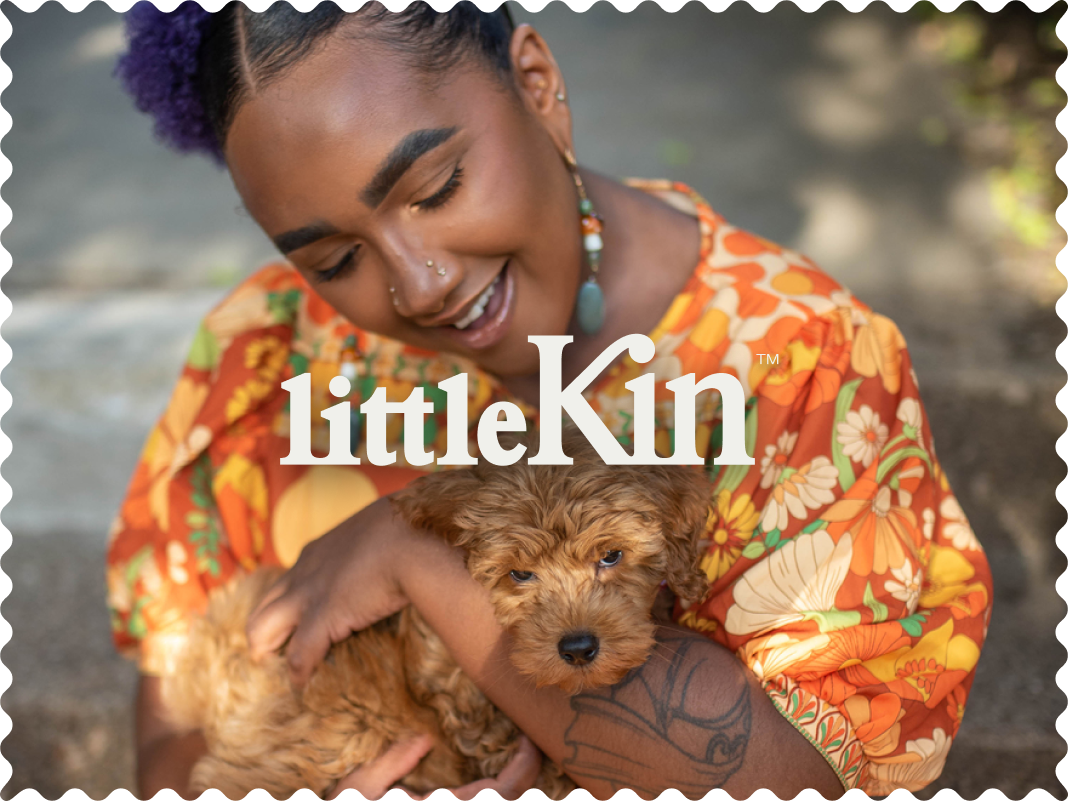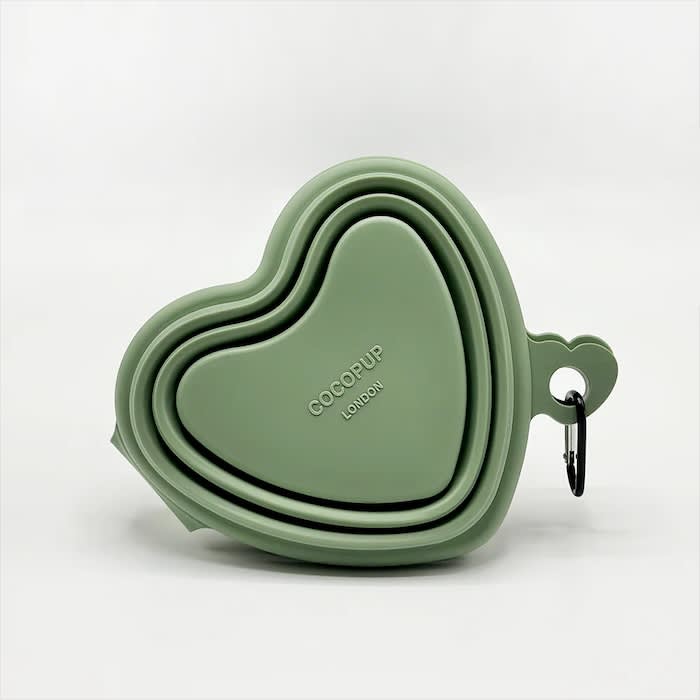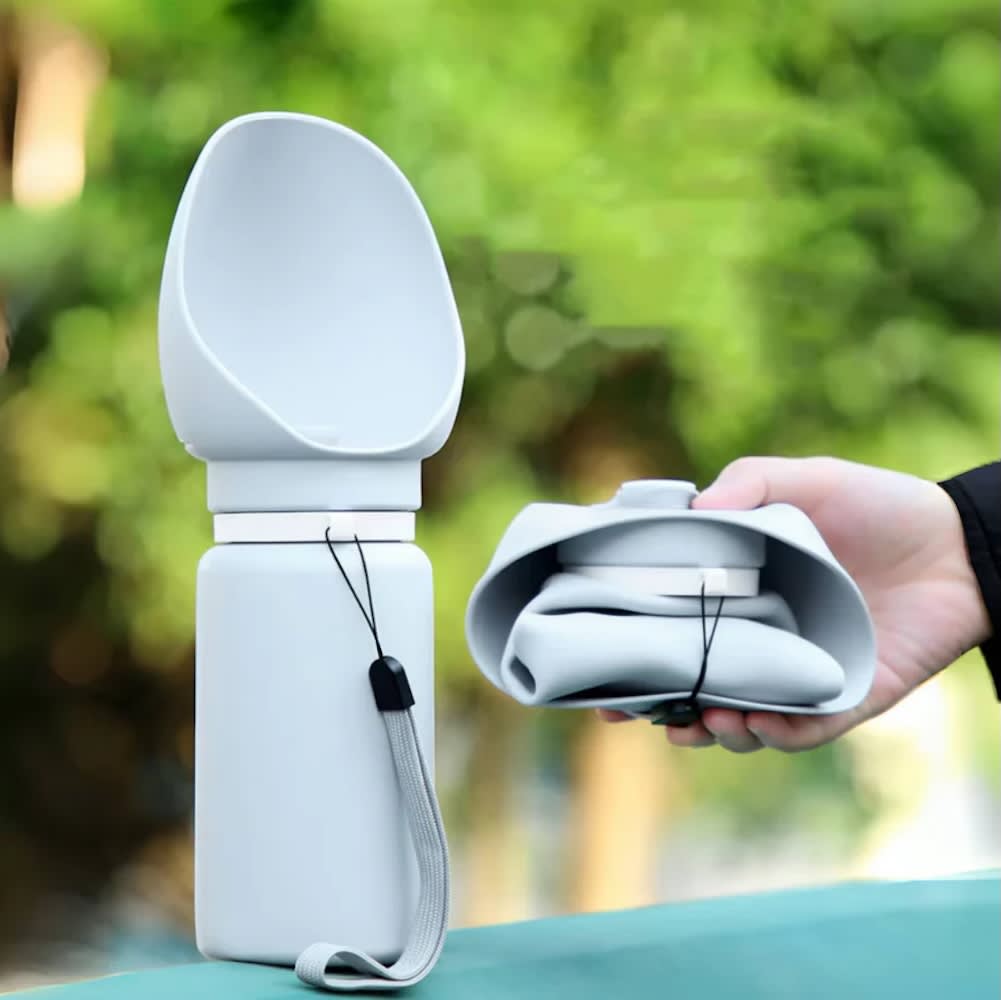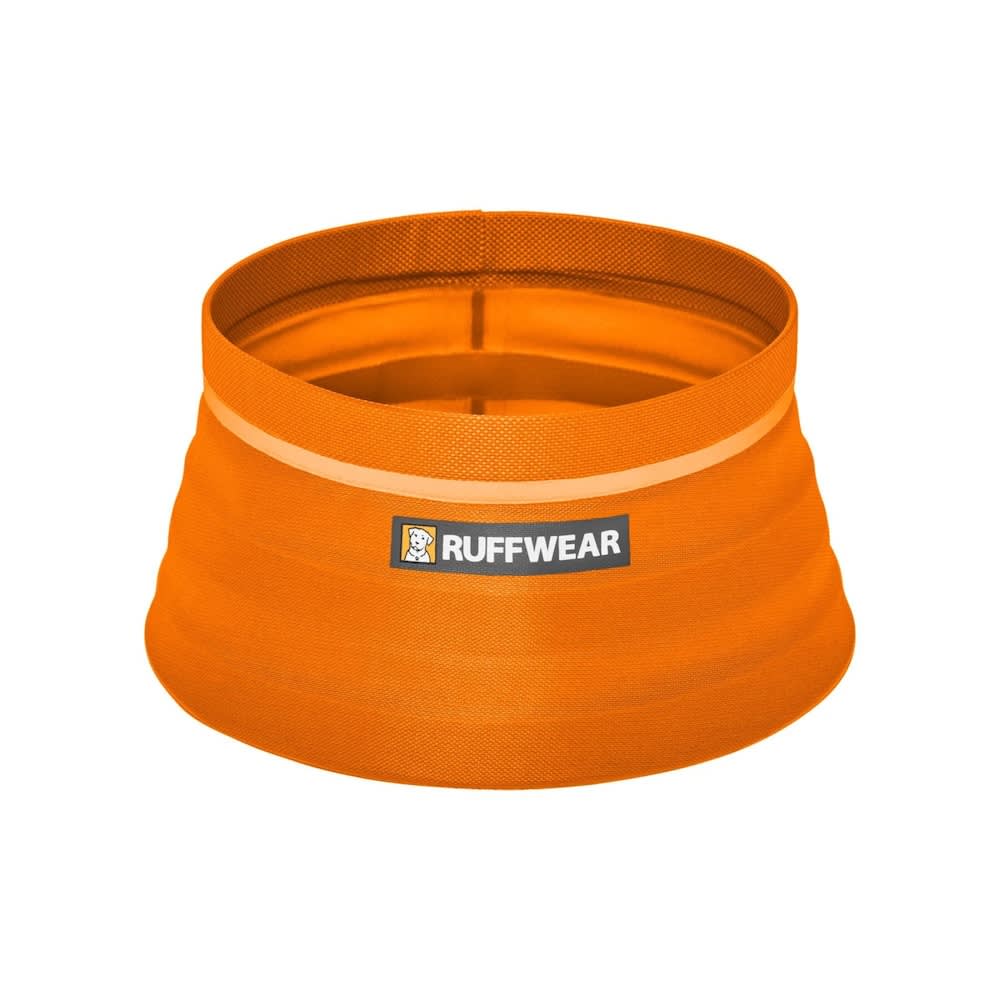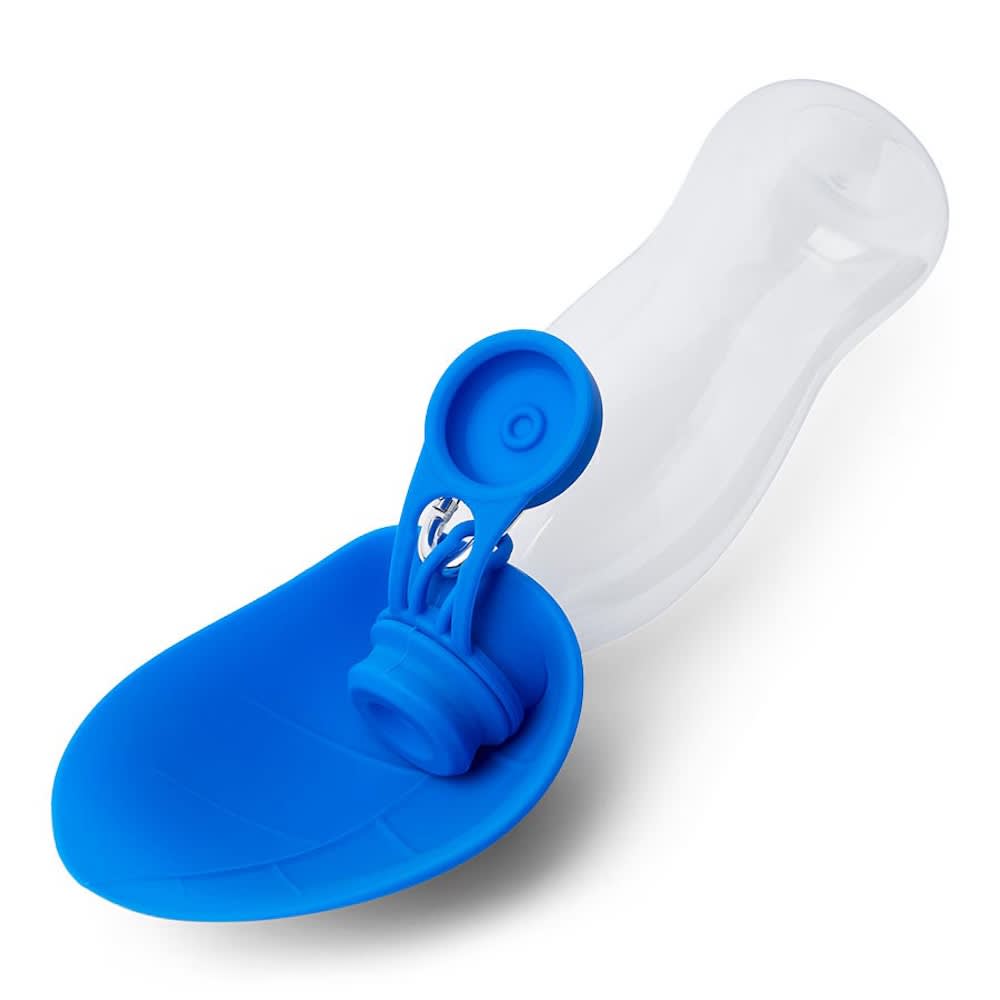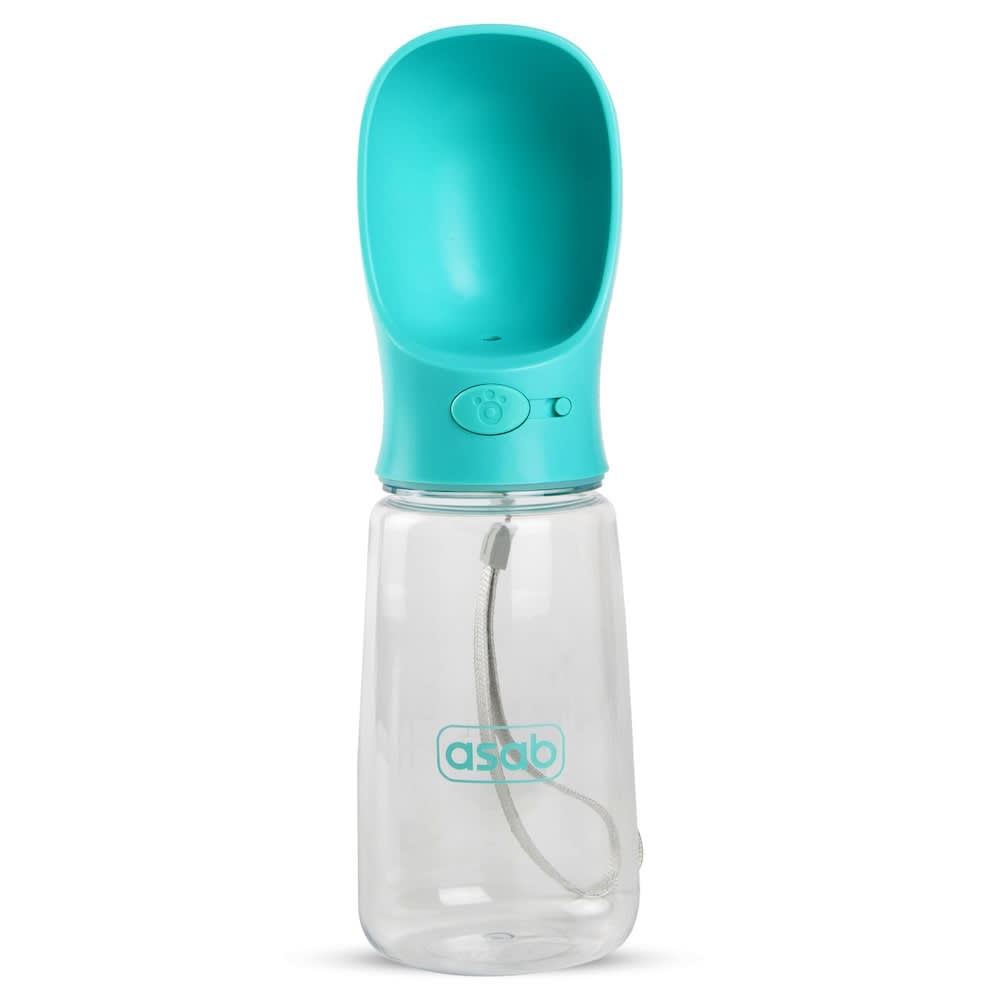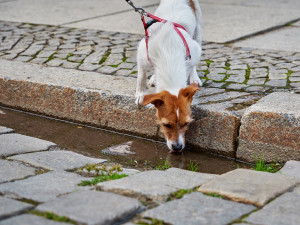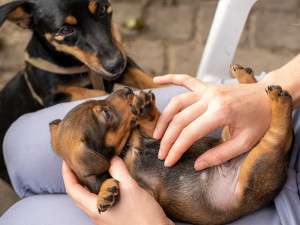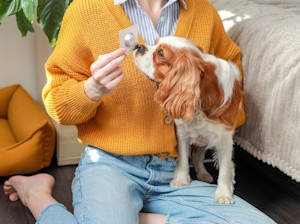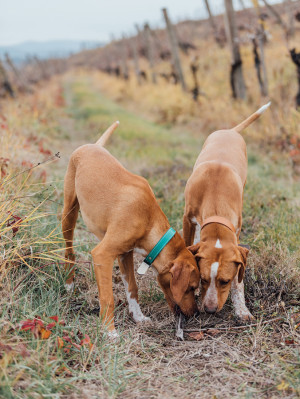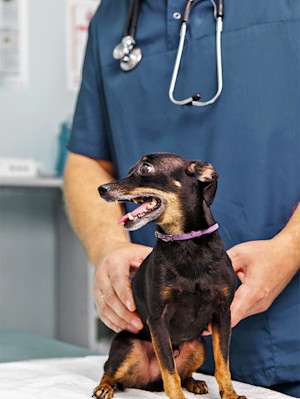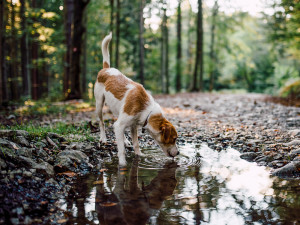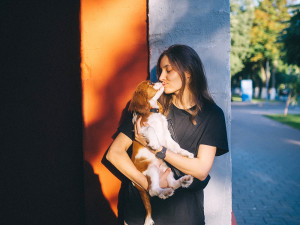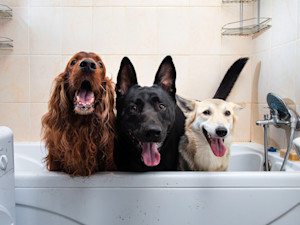Is it Safe to Let Your Dog Drink From Communal Water Bowls?
Cute idea, not so cute consequences
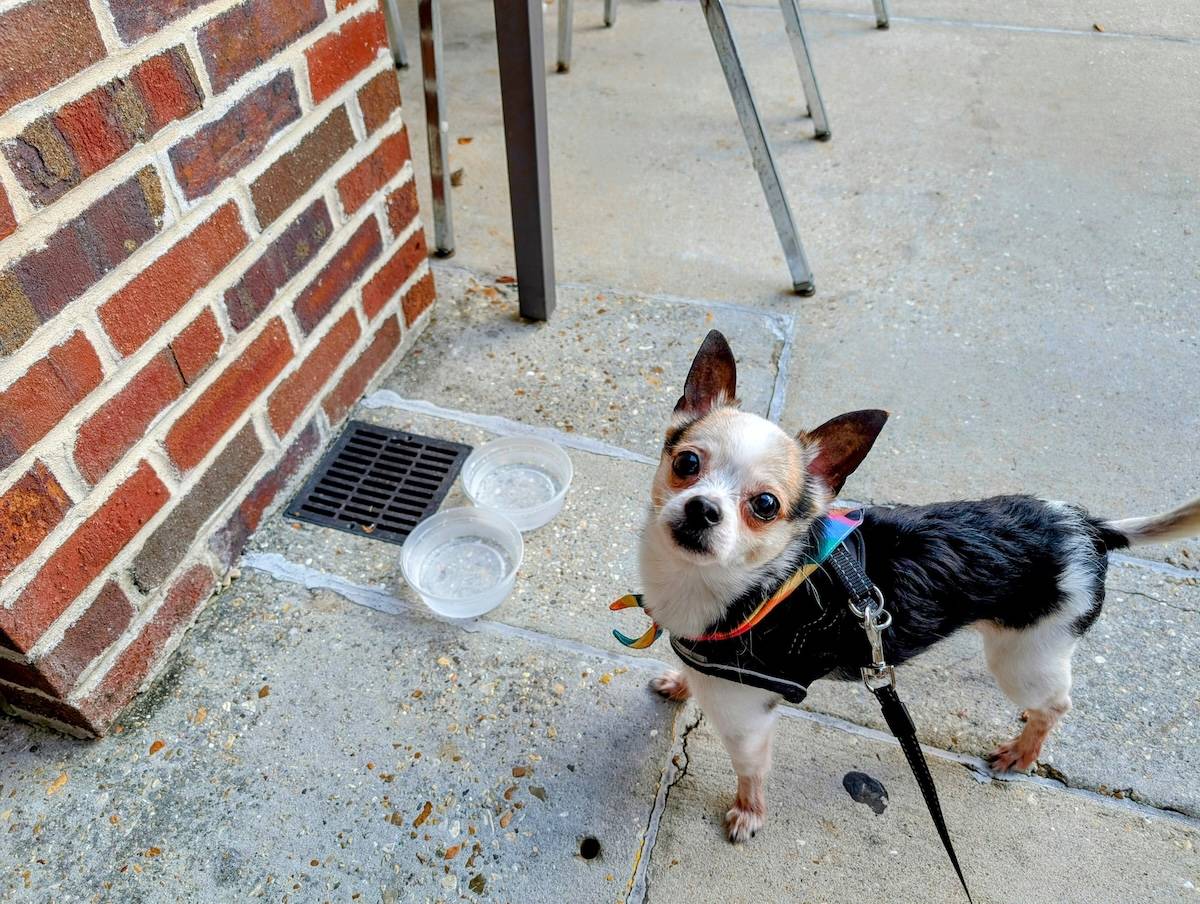
Share Article
Anyone who knows me is very aware of the fact that I hate sharing drinks. OK, I’ll take the first sip before someone else has a gulp. I’m not about the backwash. I think about cross-contamination a lot and I’ve even been known to whip out an antibacterial wipe to clean a can of Diet Coke I’ve just bought from the corner shop before I crack it open and take that magical first sip.
And so, when I’m walking along the high street with my rescue dog Lucy – passing communal water bowls aplenty outside doors, from pet shops to pubs – I often think: should I really let Lucy drink from a bowl that unknown dogs have already lapped from?
TBH, like mother like daughter, mostly she turns her nose up at what’s on offer, takes a sniff and looks away. But sometimes she laps it up (from puddles too, she loves a puddle), but if I’d never share a glass of water with a stranger, should she be doing the doggy equivalent? Are there any risks involved? I consulted some experts to find out…
Should I let my dog drink from public water bowls?
Short answer: no, you shouldn’t let your dog drink from these bowls.
But first, let’s explain what we mean by a communal water bowl. It’s a bowl of water that could be placed outside a shop or someone’s home or somewhere at the dog park – there may also be shared bowls inside pet shops, pubs or cafes. Basically, it’s any bowl of water out in public meaning that other dogs can drink from it.
And registered veterinary nurse Jade, who regularly posts informative videos on TikTok, has a stark warning: “Don’t let your dogs drink from communal water bowls,” she says in a video on TikTok. She also advises you not to put them outside of your shop or home for other dogs to drink from, even though it’s a lovely idea – especially in hot weather.
Can germs and diseases be found lurking in these bowls?
Look, these bowls are put out with good intentions, but “they can be a source of contamination,” Jade continues.
And I have noticed that in the waiting room at Lucy’s vet, Whisker & Woofopens in new tab in south London, there’s never a bowl of water on offer. Registered veterinary nurse and the practice’s manager Laura Watson says it’s because “the percentage of sick dogs coming in makes it too risky.” She says Lucy can always have some water if she needs it – “although most dogs are too suspicious of anything offered in a vet clinic,” laughs Laura.
Dr Katharine Nelson, Director of General Practice at the Royal Veterinary College, says the same rules apply at RVC veterinary practices – “dogs put their muzzles and tongues into the water to drink so there is unavoidable contamination from saliva, skin and nasal secretions.”
And Dr Nelson says that a number of dog-dog diseases are transmitted this way: “kennel cough (Bordetella, parainfluenza), ringworm (fungal infection), papillomavirus (warts, usually around the lips). And because lots of dog’s muzzles have faecal contamination (from licking their bottoms or eating horrid things) you’d have to include faeco-orally spread diseases such as roundworm, giardia, salmonella, e. Coli and campylobacter.”
What other animals might use these bowls?
Here’s the thing, bowls that are out in the open – in parks and outside shops – might be used by other forms of wildlife too – not just animals of the canine variety. “Slugs and snails might slither around the bowls,” says Laura, “and they can transmit lungworm through their slime.”
“Foxes have a very high rate of sarcoptic mange, which can be transmitted on the bowl to the face of a dog using it later,” explains Dr Nelson. Then there’s rodents – rats and mice – that contaminate water bowls with urine – “a common way to spread leptospirosis – we call it Weil’s disease in humans,” continues Dr Nelson. Birds can spread bacteria and parasites, too, “and directly contaminate water bowls with their droppings”.
Symptoms to look out for
Dr Nelson explains that you should look out for tummy upsets – that could be vomiting or diarrhoea. Then she goes on to outline the following symptoms and what they could mean:
Kennel cough: “retching type cough lasting a week or so. Vaccination is available to reduce the risk of contracting kennel cough,” she explains.
Ringworm: “scaly patches of hair loss. Can spread to humans who stroke the dog, in which case it would be red, scaly circular patches on the human skin.”
Papillomavirus: “warty lesions on the face, usually the lips. Don’t need treatment and will usually disappear on their own but can take months to years.” Warning: there are some dramatic pictures of these if you search online.
GI parasites and bacteria (such as giardia, e.coli, campylobacter, salmonella): “diarrhoea which may be mild or more severe, often acute and self-limiting but can be chronic or episodic. Most of these can spread to humans with similar results if good hygiene isn’t followed.”
Sarcoptic mange: “very itchy, hair loss, crusting of skin (especially around eyes and ears). If a dog has sarcoptic mange, the owner can also get bitten and develop itching. Many prescription flea treatments provide protection against mange.”
Leptospirosis: “renal failure, liver failure (lethargy, not eating, vomiting, collapse, jaundice).”
Lungworm: “internal bleeding (which can cause strokes and seizures) or bleeding into urine, faeces. Coughing and breathlessness. Some prescription wormers provide protection against lungworm.
Laura warns that lungworm is common in the London area.
Are any other sources of water safe when you're out and about?
The safest way for your dog to drink is water you’ve provided for them. But I tell Dr Nelson that Lucy also sometimes loves drinking from puddles in the park – “puddles have the same issues as communal water bowls, with a higher risk because they’re not cleaned or replaced regularly,” replies Dr Nelson. She recommends instead asking someone at a restaurant or cafe if they can provide some fresh water.
But Laura urges all dog owners to take water with them on a walk – however short. “And avoid walking if the weather is hot – especially for short-faced breeds such as French Bulldogs, Bulldogs and Pugs,” she says, “not walking your dog for a day or so won’t do them any harm, but walking in the heat could.”
Dr Nelson also informs me that dogs can’t sweat and, of course, their thick coats mean they’re prone to overheating in hot weather, especially when exercising. “They cool themselves down by panting, allowing water to evaporate off their tongue,” she explains, “therefore, dogs need to drink plenty of water to replace this evaporative loss when the weather is hot. If they cannot drink, the risk of heat-stroke and dehydration increases.”
So is it safe to use communal bowls in an emergency?
If your dog is thirsty and there’s no alternative, “the risk of heatstroke or dehydration on a hot day probably outweighs the risk of catching something from the bowl and it is the least bad option in an emergency,” says Dr Nelson. But make sure the water looks clear and is free of any debris.
“Dogs that are vaccinated and taking preventative wormer/mite treatment will have protection from some of the risks – including leptospirosis, kennel cough, lungworm and mange,” continues Dr Nelson.
Other on-the-go ideas to keep your dog happy and hydrated
“You can get really good collapsable bowls that fold down into your handbag,” says Laura, “and bottles with bowls attached are great, too.”
Here are some options:
What about multi-dog households? Should they all drink from the same bowl?
“Dogs living together in a household are going to share the same germs through normal play, grooming, toys etc, so I can’t see any reason to prevent them sharing a water bowl,” says Dr Nelson. “But ensure the bowl is cleaned in hot soapy water daily and not left outside where slugs, snails, birds and other wildlife can use it.”
Laura also advises to wash food bowls daily and put fresh water into your dog’s bowl every day.
So there you have it: communal water bowls are a nice idea but not really a great idea for your dog’s health. Instead, try to carry your own water with you to make sure your pup stays cool and hydrated.

Alice Snape
Alice Snape is a freelance writer and editor whose work has featured in Cosmopolitan, Metro, Red, Vice, amongst other publications. Her rescue dog Lucy is the love of her life – probably because she’s an anxious weirdo like her. You’ll likely find them both curled up in bed – Alice’s favourite place to write from – or out having an adventure together in the park…
Related articles
![Dog drinking water from a puddle in the road]()
Giardia In Dogs: Signs, Symptoms and Treatment of This Summer Parasite
If your dog drinks from puddles or splashes around in streams, read this
![One month old brown brindle Jack Russell puppy lies on a woman's lap. She strokes the dog's soft tummy. Mother dog is watching nearby.]()
Puppy Parasites 101: What You Need to Know to Keep Your Pup Safe
Does your pup have a pot belly? Have you noticed something moving in their poo? Yes, it’s time to talk about puppy parasites
![a woman in a yellow jumper offers a dog a pill in a pill packet]()
Here’s How Often to Worm Dogs
The experts answer all your questions
![Two english pointers sniffing in the dirt outside.]()
Ringworm in Dogs: Recognising Symptoms and Treatment of Canine Ringworm
Ringworm isn’t fun for anyone, but it is treatable – and preventable
![a vet's hand hold a small black and tan dog on a bed in the vet office]()
Are Yearly Dog Vaccinations Really Necessary in the UK?
Doggy admin may be tough, but it’s important
![Dog Drinking Water From A Pond In The Nature]()
What is Leptospirosis?
Everything you need to know about the potentially deadly disease
![Woman holding a beagle in warm dappled summer light]()
You’ve Got a Summer-Lovin’ Pup. Here’s How to Keep Them Safe
Some like it hot (but not most dogs). Here are the season’s health hazards, from fleas to grass seeds
![three dogs in a bath looking at a camera]()
8 Things No One Warned You About Having Multiple Dogs
Double (or triple) dog problems... and how to fix them
